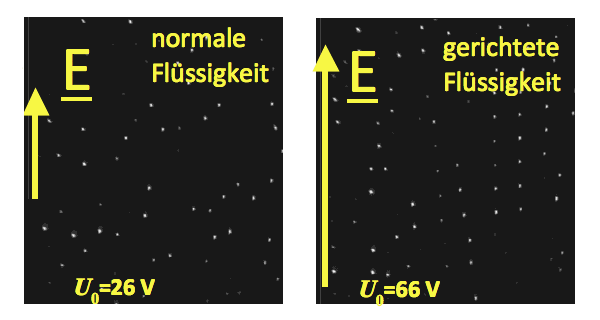|
|
The new plasma laboratory PK-3 Plus of the MPE theory group was
finished and transferred to the International Space Station in 2005.
Since January 2006 it replaced the previous plasma lab PKE-Nefedov
and contributes successfully to the progress of complex plasma research.
Because of a highly improved setup and more accurate diagnostic means PK-3 Plus allows to explore new areas in the parameter space of complex plasmas. For the first time so-called electro-rheological plasmas and the behaviour of binary mixtures could be studied. PK-3 Plus also enables us to create and investigate huge 3-dimensional plasma crystals, transitions to the liquid phase and re-crystallisation en detail. These examples point out the future way of complex plasma science: Interdisciplinary research beyond pure plasma physics. 1. Electro-rheological PlasmasIn colloidal fluids – these are fluids containing micron sized particles – the rheological properties can be changed dramatically by applying an external electric field. The (dipole) micro-particles line up along the electric field lines leading to a change in e.g. the viscosity by many orders of magnitude. This allows to tune the properties of this fluid between 'normal' liquid and elastic solid just by changing the applied voltage. Fig. 1: Distribution of micro-particles depending on the electric field strength in a normal (left) and a string fluid (right).
Complex plasmas are very similar to colloidal fluids. We need an alternating
electric field and microgravity conditions to see the same electro-rheological
effect. But with PK-3 Plus on board the ISS we managed to create and study for
the first time an electro-rheological plasma. By increasing the excitation
voltage we could initiate the transition from a homogeneous fluid to a
so-called string fluid with different properties. (Fig. 1.)
The interesting idea is to fine-tune the interaction potential between the particles between spherical symmetric repulsive and anisotropic attractive. This allows many experiments in basic research, in future also with the PlasmaLab Chamber being under contruction now. Publication: A. Ivlev, Phys.Rev.Lett. 100, 095003 (2008). More results (2)... |
|
|